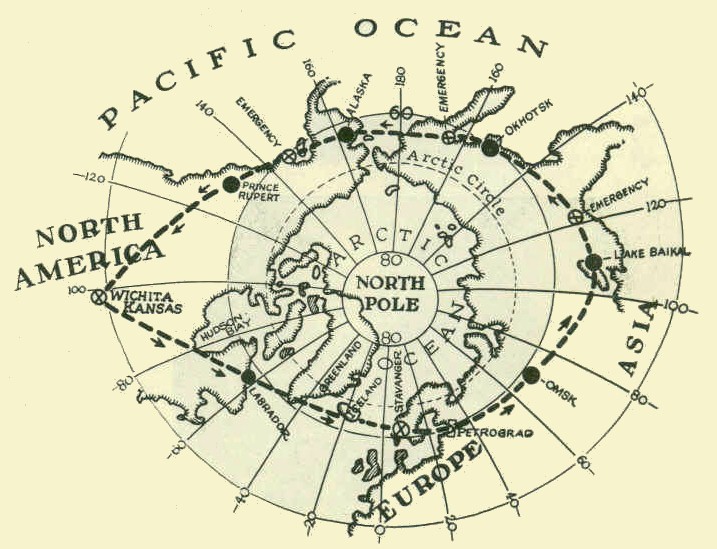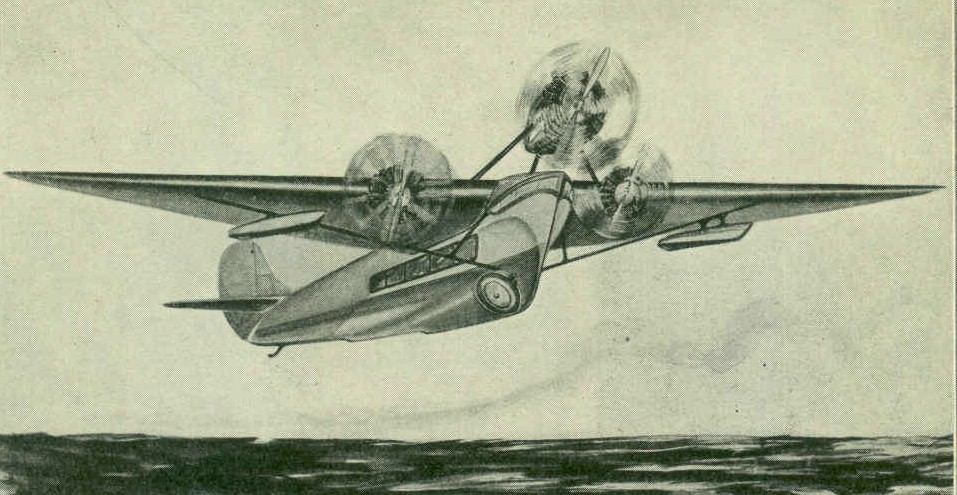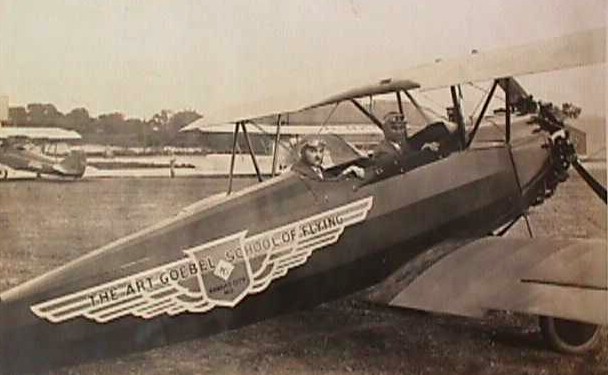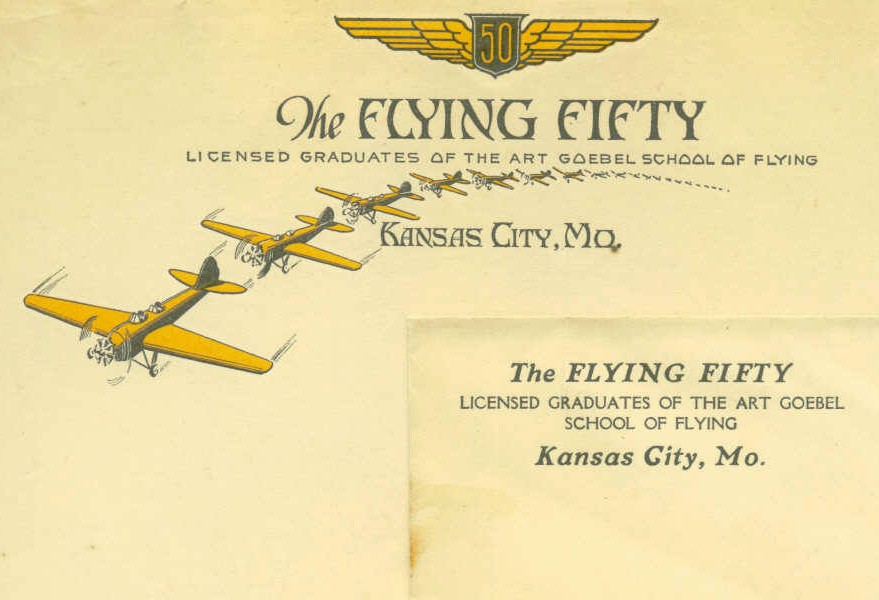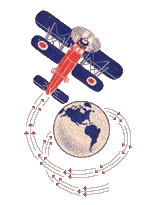Art Goebel was born in 1893. He was a fighter pilot in WW-I and after the war became a
stunt flyer in the movie industry.
In 1927 Art focused world aviation attention on the Phillips Petroleum Company by winning
the Dole Pineapple Company air race from Oakland, CA to Honolulu, HI. On August 16, 1927, eight
official entries left Oakland but only two made it to Honolulu.
Art flew a Travel Air MA5000 named "Woolaroc", a Phillips-sponsored aircraft carrying 417
gallons of Phillips aviation gasoline. He and his navigator, Navy Lieutenant William V. Davis Jr.
made the 2,437-mile trip in 26 hours and 17 minutes. The 2nd place finisher was the "Aloha"
piloted by Martin Jensen, a Honolulu commercial pilot and his navigator, Captain Paul Schluter.
During the course of this race, four planes were lost and ten people died, including the only woman
entrant, Mildred Doran who was called the "Flying Schoolmarm."
On September 13, 1928 Art and his navigator, H. Tucker flew their plane, "Yankee Doodle" winning
the first transcontinental non-stop air race from New York, NY to Los Angeles, CA. Art passed away
on December 3, 1973.
The above biography is what most know about Art Goebel. Here is the "rest of the story." Art had
his moments of fame winning the Dole Race from California to Hawaii in 1927. One success followed
another, when he won the first transcontinental non-stop race from New York to California in 1928.
Almost immediately, he did it again with another transcontinental non-stop record flight winning the
1928 National Air Race.
Art was in the world's spotlight! He felt he could do the impossible! He could fly the impossible
dream! In April 1929 he announced that he would capitalize on his flight successes with a flight
round-the-world. He was well versed in in-flight refueling so with the right plane, he proposed to
fly round-the-world in 5 days. His plan called for seven ships to be strategically located round the
world that would launch refueling planes to replenish his fuel supply allowing him to fly
round-the-world without landing. He collaborated with German engineers to design his new plane. It
was to have three Pratt and Whitney Wasp engines generating 1260 horsepower. His proposed epoch-making
circumnavigation was plotted out with a take-off from Wichita, Kansas proceeding across the
Northeastern part of the US through the Hudson Bay Region and Labrador (1st refueling). He would
continue over Greenland and Iceland to Norway (2nd refueling). Then he would fly via Petrograd to Omsk,
Russia (3rd refueling). Thence, across Asia to Lake Gaikal, Russia (4th refueling). He would continue
to Okhotsk, Russia (5th refueling) and fly over Siberia and the Bearing Sea to Alaska (6th refueling).
His flight path called for him to make his final refueling at Prince Rupert Canada (7th refueling)
before his return to Wichita Kansas.
Round-the-world with 7 in-flight refuelings in 5 days. Great plans. But history tells us that the
proposed plane and the proposed flight never occurred. Art left his mark on our aviation history by
training new pilots in his "The Flying Fifty" school of flying in Kansas City Missouri. Thanks Art.

